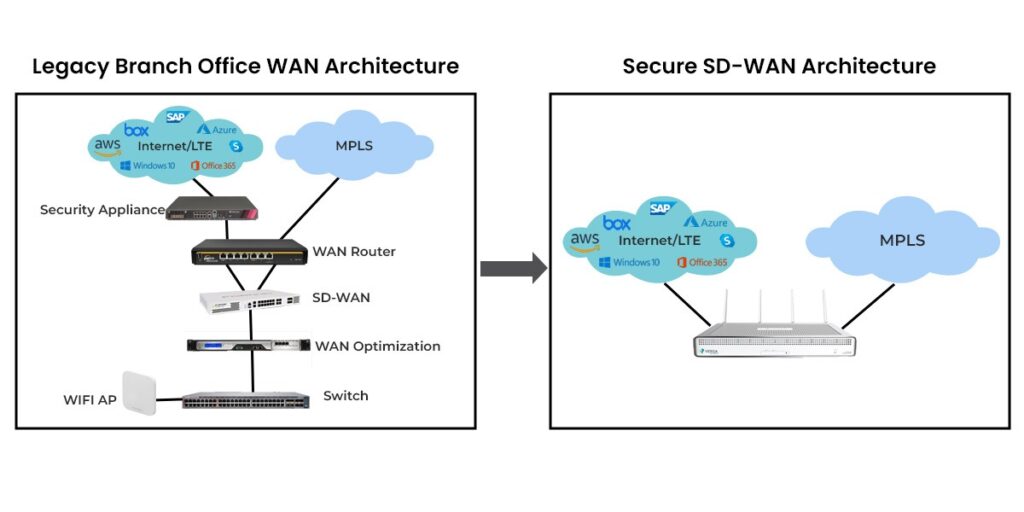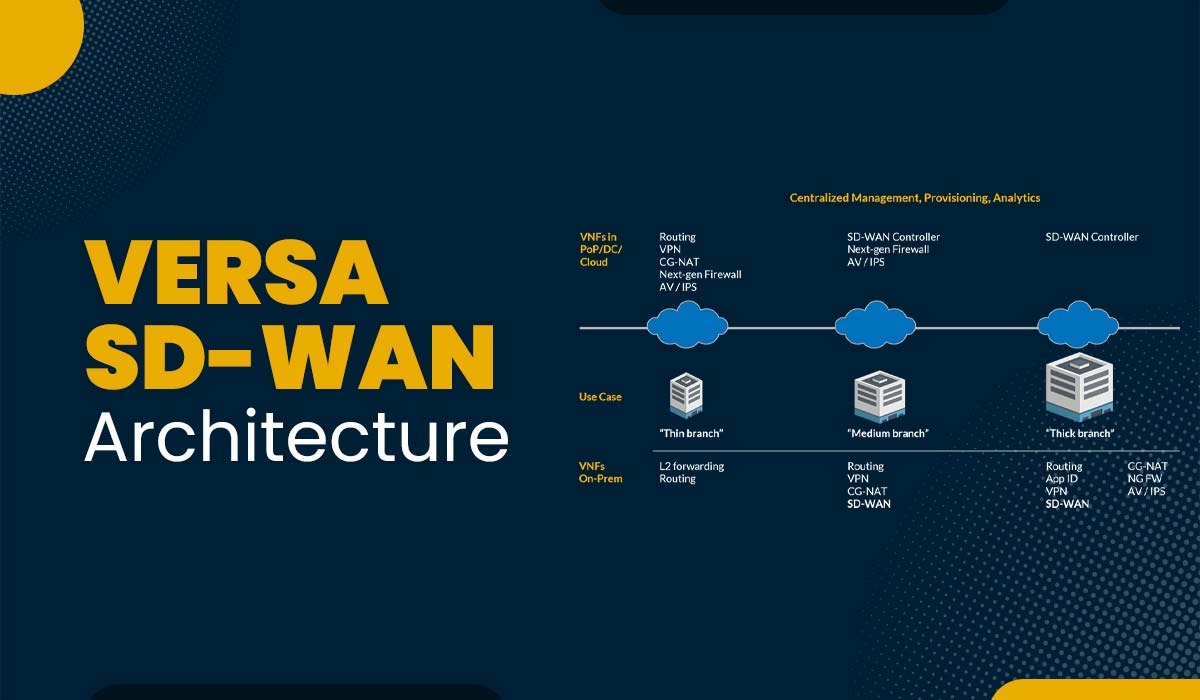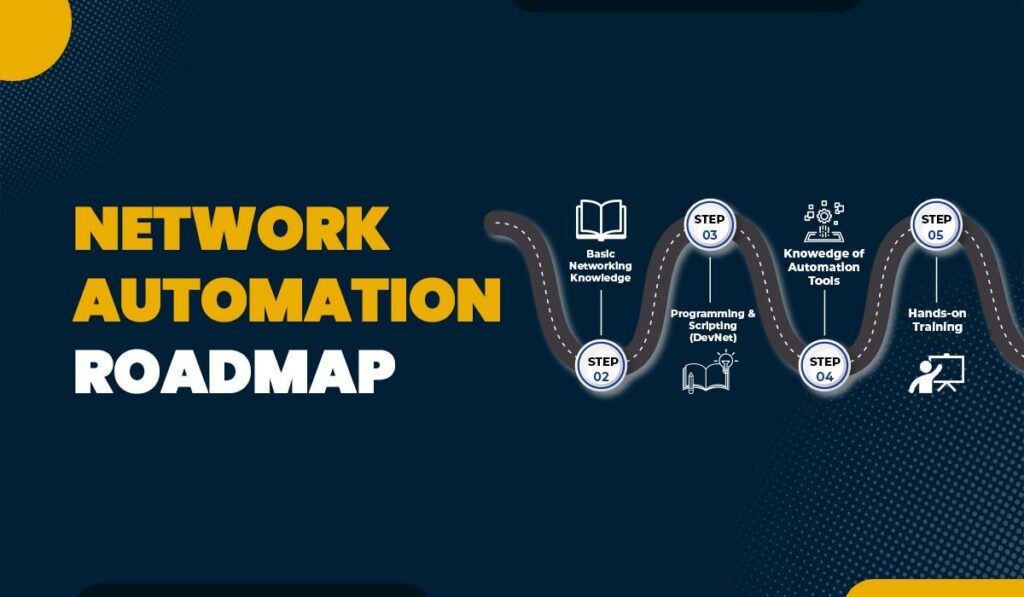Introduction
In the ever-evolving world of modern networking, the rise of Software-Defined Wide Area Networks (SD-WAN) has changed the way organizations connect and manage their networks. Among the leading players in this domain, Versa Networks has emerged as a prominent service provider, offering a comprehensive SD-WAN solution. In this blog, we will delve into the intricate details of the Versa SD-WAN architecture and its key components, features and benefits.
Before getting into more details, it is better to understand the basics of the architecture of Versa SD-WAN first.
What Is Versa SD-WAN Architecture?
Versa SD-WAN architecture has been designed to support advanced security offerings and scalable routing in a single device. It is armed with NSS-tested security capabilities like next-gen firewalls, antivirus, SSL proxy, and others. It is a cloud-native, multi-service software platform that is designed to operate optimally in branches, data centers, and cloud networks. A single pane of glass management and true multi-tenancy makes networking easier while it increases both security and performance.
You can also check out Versa SD-WAN Training if you want to prepare for certification exam or learn more about Versa SD-WAN. But, the question now arises is how the architecture of Versa SD-WAN can help companies in boosting their performance and security. Below, we have discussed how it can simplify the branch office complexity and how it has evolved over the years to offer a high level of security.
Simplifying WAN Branch Office Complexity
Versa also provides a secure SD-WAN architecture of Versa Secure SD-WAN to tackle the issues associated with traditional WAN branch offices. These setups are characterized by a stack of multiple devices, including Routers, switches, Wi-Fi, and security appliances, which in turn serve as layers of management responsibility, power usage, and security vulnerabilities due to multiple interfaces. Moreover, they often replicate tasks such as parsing of packets or routing lookups, which increases the flow’s ineffectiveness.

The Evolution of SD-WAN and Security Integration
It is vital to realize that the initial instances of SD-WAN solutions while enhancing traffic handling by offering application differentiation and traffic load balancing, lacked adequate security and superior routing solutions. When the first cohort of SD-WANs was introduced, they lacked the complete picture and lower level of management for security that is now required in current networks. This shortfall was compensated, often with annoying inconsistency, by a range of added-on security features still leaving computer networks at risk.
Let us now discuss the different components of Versa SD-WAN architecture.
Key Component of the Versa SD-WAN Architecture
Below, we have discussed the components of Versa SD-WAN Architecture.
Versa FlexVNF
Versa FlexVNF is the cornerstone of the Versa SD-WAN architecture in the software-based networking and security solution that can be run on-premises, on the cloud, or as a hybrid one. Some of the networking and security functions brought by the Versa FlexVNF are:
- SD-WAN routing and optimisation
- Advanced firewalls
- VPN online processing features
- Application visibility and control
- Network service integrations, such as DHCP and NAT
Versa Analytics
The versa analytics part of the Versa SD-WAN architecture is a built-in component that offers additional data analysis and reporting functions. It gathers and consolidates network telemetry data from various sources, including FlexVNF and other network equipment.
The Versa Analytics engine offers:
- Real-time monitoring and dashboard for network performance
- Analysis of identity patterns and issues
- Customizable reporting and alerting mechanism
- Integration with third-party systems and tools
Versa Secure Access
Recognizing the growing importance of secure remote access, the Versa SD-WAN architecture incorporates the versa secure access solution. It provides a comprehensive cloud-delivered secure access service which enables secure connectivity for remote users.
As already mentioned, there is a rising need for a secure means of remote access, and thus, the Versa SD-WAN architecture includes the Versa Secure Access solution. It offers a holistic cloud-delivered secure access solution that allows the provision of secure access to different users who are offsite, such as:
- Zero Trust Network Access (ZTNA)
- SWG capability for web protection against threats originating from the internet
- Virtual private network (VPN) for remote user connection to be hosted in the cloud
- Provided endpoint security and measurement of the security posture to ensure conformity
There are various use cases and deployment models that Versa SD-WAN architecture can offer. Let us discuss these in detail.
Deployment Models and Use Cases of Versa SD-WAN Architecture
Versa SD-WAN architecture offers a multitude of tailored solutions and deployment strategies to fit the needs of enterprises.
Enterprise-Wide SD-WAN Deployment
The Versa SD-WAN architecture is marketed in segments for large, geographically dispersed organizations and can be deployed throughout the organization, connecting many branch offices, data centres and remote workers. This centralized approach helps organizations and companies to have policy enforcement all over the organization, which at the same time makes management easier since everything is more centralized and visible when it comes to the functioning of the organization on the Internet.
Hybrid WAN Integration
The Versa SD-WAN architecture is fully compatible with existing WAN architectures, which makes it possible for organizations to employ both traditional and software-defined WAN architecture. This can make the transition to a more broad scale SD-WAN easier because few of the previous investments can be lost, and the benefits of the Versa solution can be realized more gradually.
Cloud and Multicloud Connectivity
Due to the rising adoption of cloud solutions in organizations, the Versa SD-WAN architecture offers a secure solution to connect to public, private and hybrid clouds. It provides the capability for high-performance, secure access to the cloud resources while assuring the best application performance and data security.
Remote and Mobile Worker Connectivity
The Versa Secure Access component addresses the modern trend of users requiring secure access from home or while on the move, business travellers, or those in need of access for a short while from remote locations. It helps the organization maintain its policies since the enforcement will not differ with the geographical location or the device the users are using.
Small and Medium-Sized Business (SMB) Solutions
For SMBs and distributed enterprises with constrained IT resources, the Versa Titan offering gives a fully outsourced SD-WAN and security solution. It improves network management, decreases workload for IT professionals and offers the advantages of SD-WAN and security in an integrated, cloud-based solution.
Below, we have discussed the different benefits that Versa SD-WAN architecture offers.
Benefits of Versa SD-WAN Architecture
Some of the benefits of Versa SD-WAN Architecture are:
- Application-Aware Routing and Optimization – The Versa SD-WAN reference architecture implements best-in-class routing and optimized techniques to deliver the best application performance over the WAN. It uses DPI to identify and rank various kinds of network traffic so organizations can match their routing approaches to their business-critical applications.
- Unified Security and Compliance – Security has become one of the most critical aspects of today’s networking, and Versa technology addresses this issue by providing broad security solutions. Within a Versa FlexVNF, numerous security features are deployed, including a stateful firewall, IPS, VPN, and advanced threat protection.
- Flexible Deployment and Scalability – The Versa SD-WAN architecture brings high opportunities to organizations in terms of its deployment options and customizations. The Versa FlexVNF can be the physical appliance-based, virtual machine-based, or cloud-native function that allows the most suitable deployment model for different network locations to be chosen. At the same time, the Versa SD-WAN architecture also offers easy network scaling suitable for the growth and evolution of the organization’s needs. In addition, new sites and devices can be quickly integrated into the environment. At the same time, the policy management and the operations of the network can be assigned to a certain extent of centralized management and orchestration, even if the infrastructure is growing larger.
- Centralized Management and Automation – The Versa Director, which is the management and control node, makes the management and visibility of the entire SD-WAN architecture much easier. It offers an easy-to-use and holistic management plan, where the operational tasks encompassing network policies, security settings, and the like can be tackled via one point of contact.
- Comprehensive Analytics and Visibility – The Versa Analytics component offers a powerful data analysis and reporting function that can provide organizations with huge insights into the SD-WAN architecture. It gathers and consolidates information about network activities from multiple places to help IT professionals discover information about the performance of applications and services, network traffic, security incidents, and other phenomena.
These are the benefits of Versa SD-WAN Architecture.
Frequently Asked Questions
Q1. What is SD-WAN Versa?
Versa Secure SD-WAN is a single software platform that offers multi-layered security and enables enterprise multi-cloud connectivity.
Q2. How to configure versa SD-WAN?
- Go to Workflows
- Open the Bind data tab
- Click on the serial number of the device you are using. The Device window opens.
- In the IPsec section, enter the IP of your applicable device interface.
- Click OK.
Q3. Does SD-WAN need a static IP?
Without Static IP support, it is not possible to perform inbound sessions over the SD-WAN overlay. If an SD-WAN solution doesn’t offer Static IP support, it limits the possible features and services that your customer can eventually run over the SD-WAN.
Q4. How does Versa SD-WAN work?
SD-WAN understands individual applications and their SLA requirements and translates them into policies that the network must adhere to. This provides active network and application experience monitoring that ensures optimal traffic delivery and QoE.
Conclusion
The Versa SD-WAN architecture is, therefore, an integrated and remarkable model of the contemporary wide-area Networking. Versa OS or VOS enables the organization to manage, secure and optimize network and application infrastructures in their extended network that otherwise is managed in silos to achieve efficient IT operation with integrated routing, security and management features.
So, as business ventures and organizations further strive to manage their IT frameworks in the current digital environment, the Versa SD-WAN architecture is characterized by flexibility, scalability and security in the new digital age, hence ensuring the success of the business ventures in the era of digital transformation.





